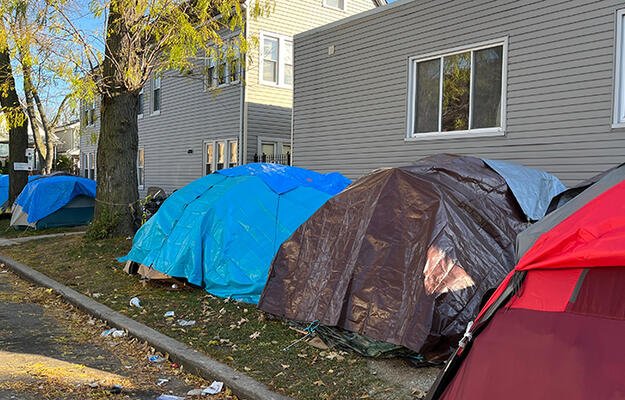
Homeless People with Substance Abuse Problems Need Housing Assistance and Treatment Options
- Title:
- Homeless People with Substance Abuse Problems Need Housing Assistance and Treatment Options
- Author:
-
Friedner Wittman, Douglas Polcin, Dave Sheridan
- Source:
- Publication Date:
-
2017
More than a third of the roughly half a million Americans who are homeless on any given night have significant substance abuse problems. Two primary housing models are designed to serve this population: sober living houses (SLHs), which are alcohol- and drug-free living environments that emphasize a peer-supported recovery environment, and Housing First (HF), which adopts a “personal autonomy” approach that provides optional services for substance abuse and psychiatric disorders (and lacks the SLH community approach). The two also differ on definitions of recovery. SLHs define recovery as daily abstinence from drugs and alcohol, while HF defines it more broadly to include all efforts toward positive change, even if the participant is still using drugs and alcohol. To explore and compare how location, design, and operations influence residential experience in SLHs and HF, this study draws from existing literature, considerations from architectural planning papers, and discussions in forums on housing models for homeless people. The authors include key policy recommendations that focus on how service providers can be more responsive to residents’ needs and how the federal government could support housing options for homeless people with substance abuse problems.
Key findings
- The emphasis on community in SLHs is conducive to open plans that naturally lead residents to come together in common living areas. Bedrooms in SLHs are typically shared because it is more cost-effective and less isolating than single rooms (which the authors say can lead to relapse) and because open environments are easier to monitor. HF facilities provide more privacy where residents live with fewer requirements.
- SLHs use a “social model” approach that emphasizes peer support and empowerment, and professional services are delivered offsite rather than offered at the house.
- HF facilities usually have services delivered onsite, and SLHs do not, so access to public transportation and community services, such as medical care and job training, are more important to consider when choosing an SLH location.
- Although both HF and SLH are legally protected, they have been subject to “not in my backyard” complaints and attempts to change zoning laws. SLHs are typically viewed by neighborhoods more favorably because of their abstinence requirement.
- SLHs are suitable for those looking for a community and to achieve sobriety, and the HF approach can accommodate a wider variety of people and their needs. For some who may feel overwhelmed by the abstinence requirement and active participation in the community of recovery or are not interested in abstinence, HF facilities may be a better fit.
Policy recommendations
- Planners of services for the homeless should create programs and policies conducive to the person-housing match based on needs and preferences. HF and SLHs should run in parallel ways, allowing homeless people to move freely between them.
- US Department of Housing and Urban Development (HUD) funding should support a range of housing options for those with substance abused problems and prioritize funding for permanent housing after treatment completion. HUD currently only funds HF residences.
- When building homeless housing, planners should consider the spatial layout, level of privacy, ability to monitor, availability of services, and characteristics of the neighborhood.
- Housing models should consider how their services can adapt to be more responsive to residents’ needs, such as changes in mental health or substance abuse.
Photo by Monkey Business Images/Shutterstock


